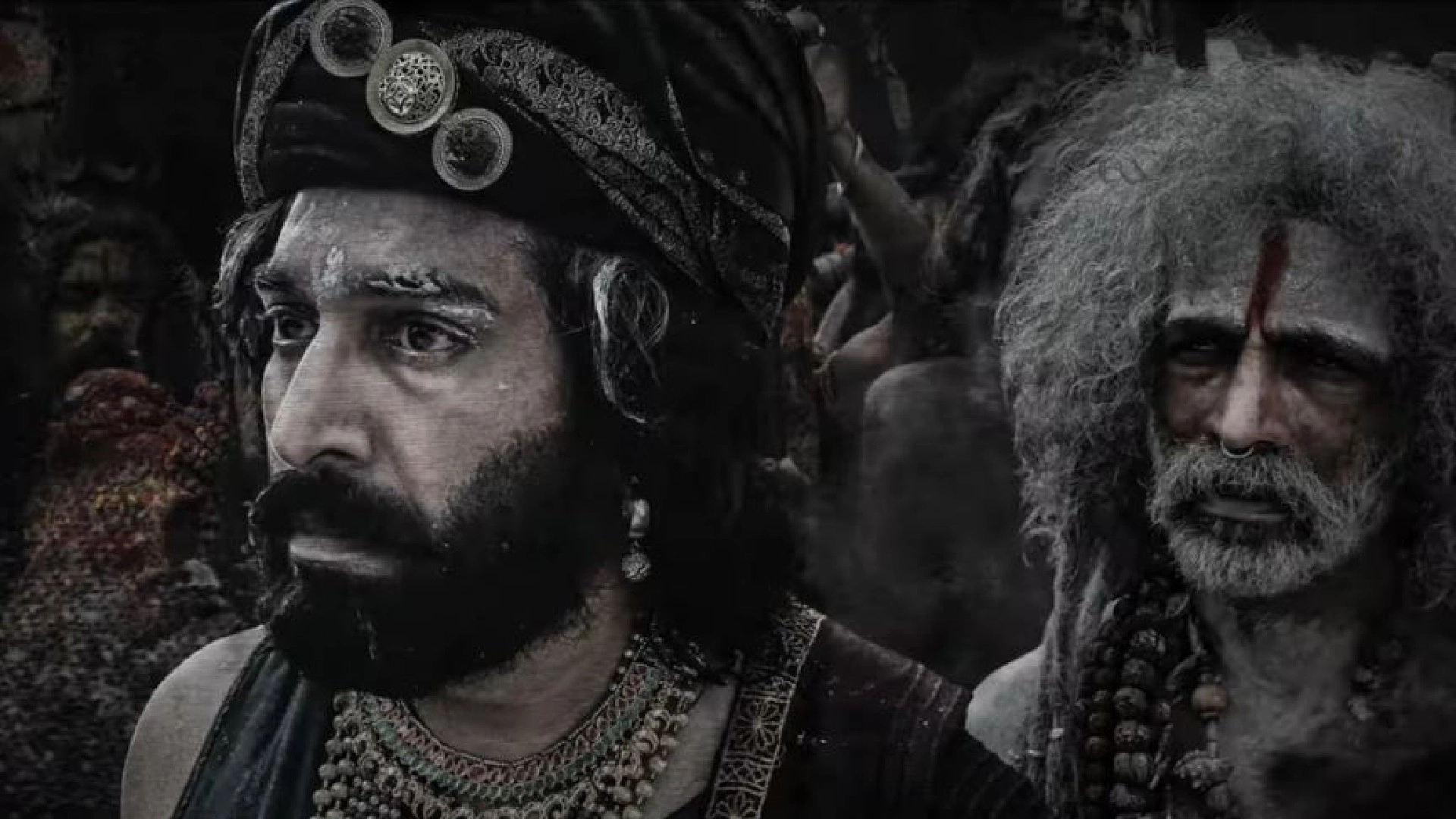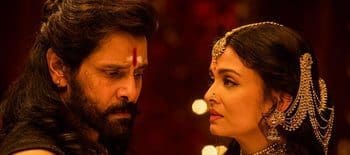
The Ponniyin Selvan duology saw a new way to adapt an epic that is etched into the hearts of the masses. It was an excellent return to form for Maniratnam, who trusted his way of handling source material. His duology was based on Kalki Krishnamurthy’s legendary magnum opus, Ponniyin Selvan, a historical fiction that detailed the rise and fall of the Chola Empire.
The Cholas were the royal clan that was the ruler of Southern India. Therefore, the films had a lot of expectations from not only the Tamil people who knew the whole story by heart but also fans worldwide who were in anticipation of watching what Maniratnam could do with an epic. The films were terrific in cinematography, production design, screenplay, and world-building.
Ponniyin Selvan – A Duology to Rival The Game of Thrones
The performances enhanced the entire experience and made it a beautiful ode to the classic novel. The tremendous success of the Baahubali franchise prompted Maniratnam to think about the possibility of a two-part epic rather than a single standalone film. But many critics have come up with the opinion that both movies could not be easily relatable. This was because of the ‘highlights approach’ in the screenplay. Many essential characters and events from the novel were excluded.
The scenes and characters in the film became a bit rushed. The fact with literature was the expansive nature of the story. Kalki has masterfully filled the pages with the mental dispositions faced by his characters and detailed the relationship they shared with each other. It was a Game of Thrones where all the characters conspired or fought for power and authority. But what Maniratnam managed to perfect was the palpable energy of the novel.
Seeing how each character thinks cunningly and strategically was exciting, making it one substantial entangled game of chess. There was a great grandeur in Ponniyin Selvan, but it was the political game where clearly the brain overpowered the sword. It is a splendid piece of literature that needs an expansive world and setting like HBO’s ‘Game of Thrones‘.
An epic with so much source material and associated history could not be condensed into a two-part film. But nevertheless, Maniratnam managed to pull off a convincing duology by making sacrifices and creating shorter routes by bridging the vast gaps that naturally originate when you filter out large portions of the novel. The beginning and end of the story are similar in both the film and the book. But the way the characters in Ponniyin Selvan – the movie and the book – take that journey is significantly different despite the similar core and theme.

Madhuranthakan’s origin
Madhuranthakan is the son of Gantharaditya Chola and Queen Sembiyan Madevi. Madhuranthakan has a right to the throne as his father, Gantharaditya(the former emperor), passed away when he was an infant. But the throne could not remain vacant, and it was given to Sundarachola, Gandharaditya’s nephew. The story kicks off with Madhuranthakan conspiring to make a claim to Sundarachola’s throne.
Madhuranthakan is revealed to be the son of Manthakini, making him and Nandini siblings. Sembiyan Madevi had a stillborn baby and sought Minister Anirudha’s help to switch the stillborn baby with another one. Manthakini was approached by Anirudha for the baby-switching, and although she was reluctant, she finally complied. And the major twist in the novel is revealing that Madhuranthakan is not the heir to the throne.
Senthan Amudhan’s Right to the Throne
Senthan Amudhan is the stillborn baby of Sembiyan Madevi, that was switched at birth. But it was too late to change back when the queen discovered that the child was healthy. He grew up to be a flower seller near the temple. He became a loyal friend to Vanthiyadevan and took part in some of his adventures throughout the novel. The story’s climax is Senthan finally getting the right to the throne and Arunmozhi crowning him emperor of the Chola empire.
But in the film, Madhuranthakan gets crowned, and Arunmozhi and Vanthiyadevan perform extraordinary expeditions under him. It would take a few more years for Arunmozhi to become king and punish the conspirators of Aditha’s murder.

Comedy Track between Nambi and Vanthiyadevan
In the first part of the Ponniyin Selvan duology, the comical exchanges between Alwarkadiyan Nambi and Vallavarayan Vanthiyadevan were dumbed down compared to the novel. Since Maniratnam chose Vanthiyadevan to be the character through which the story traveled, it was suitable to also detail the struggles faced by Nambi and him to reach Lanka by ship. Also, the funny banter between the duo gave the whole novel much more groundedness.
Ponniyin Selvan – The Wars
There are only mentions of wars being waged in the novel. There is no description since Kalki always paid more attention to the character’s psyche and the political game afoot. But the detailed two wars against the Rashtrakuta king Khottiga was an excellent spectacle to attach to the film version. This is one of the better decisions Maniratnam took as a slight deviation from the novel.
Nandini and Karikalan’s death
The character of Nandini is entirely fictional when it comes to the novel’s accuracy, mirroring historical events. In the book, Nandini is the twin sister of Madhuranthakan. She is raised by a priestly family when baby-switching happens.
A teenage Nandini falls in love with the crown prince Aditha Karikalan, which is not approved by his sister Kundavai and grandmother Sembiyan Madevi. She was banished from the kingdom so that the relationship could not grow. This causes a lot of grief in Aditha. She is said to have been adopted by a Pandyan king, Veerapandian. This is where things become a bit complicated.
There is an incest angle to Veerapandian and Nandini’s relationship. Veerapandian is Nandini’s biological father, and Manthakini is her mother. Veerapandian is killed in the war between him and Karikalan. In the film, Karikalan assumes that Veerapandian and Nandini are lovers as she begs him to spare his life. Karikalan proceeds to behead Veerapandian, setting off a vendetta against Nandini, who conspires against the Chola empire.
The novel is unclear about Karikalan’s death as history itself is not. There are many theories as to how Karikalan must have met his end. But in the film, he either stabs himself or forces Nandini to stab him by embracing her. His guilt, regret, and anguish in creating a vengeful individual out of his former lover are explored as a focal point in Ponniyin Selvan-2. This shifts perspectives and gives us a more linear understanding of the story.

Maniratnam created such bridges in the story and carefully followed the historical facts. So many interesting characters in the novel deserve their own spin-offs. But as far as creative choice is concerned, the linear approach of Ponniyin Selvan in telling the complex story was suitable to a great extent.

Be the first to comment